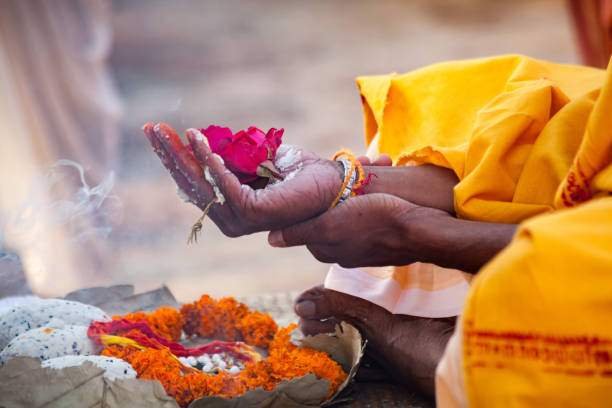Colors play a profound role in Indian culture, carrying deep spiritual, religious, and emotional significance. Each color is associated with traditions, rituals, and social customs, making them an integral part of daily life in India.
The Symbolism of Colors in Indian Culture
Whether it is in festivals, clothing, art, or religious ceremonies, colors convey messages of faith, prosperity, and emotions.
Red: The Color of Power and Auspiciousness
Red is one of the most dominant colors in Indian culture, symbolizing love, fertility, strength, and prosperity.
- In Weddings: Brides traditionally wear red sarees, as the color is believed to bring good luck and marital bliss.
- In Religion: Red is associated with goddesses like Durga and Lakshmi, signifying power and wealth.
- In Rituals: The red vermilion (sindoor) worn by married women represents commitment and longevity of marriage.
Yellow: The Color of Wisdom and Learning
Yellow represents knowledge, happiness, and divinity.
- In Festivals: Yellow is worn during Vasant Panchami, a festival dedicated to Goddess Saraswati, the deity of wisdom and learning.
- In Rituals: Turmeric, which has a yellow hue, is widely used in religious ceremonies and weddings to purify and bless individuals.
- In Spirituality: Hindu priests and ascetics wear yellow robes, signifying renunciation and spiritual awakening.
Blue: The Color of Divine Energy and Protection
Blue symbolizes calmness, divinity, and strength.
- In Hindu Mythology: Lord Krishna, Vishnu, and Shiva are depicted with blue skin, representing infinite energy and cosmic power.
- In Daily Life: Blue is seen in temple decorations, festival attire, and art, reflecting serenity and stability.
- In Protection: Many households use blue talismans to ward off the evil eye and negative energies.
Green: The Color of Nature and Harmony
Green represents life, renewal, and fertility.
- In Agriculture: As an agrarian society, India associates green with abundance and prosperity.
- In Islam: Green holds significance in Islamic traditions, often seen in mosques and sacred attire.
- In Festivals: Green is worn during religious celebrations to symbolize harmony and peace.
White: The Color of Purity and Peace
White stands for purity, peace, and spiritual enlightenment.
- In Mourning: White is worn during funerals and periods of mourning, signifying detachment from worldly life.
- In Religion: It is considered the color of saints and sages, symbolizing spiritual purity and truth.
- In Architecture: Many Indian temples and monuments, such as the Taj Mahal, are built using white marble, representing divine beauty and peace.
Orange (Saffron): The Color of Sacrifice and Courage
Saffron is one of the most revered colors in India, symbolizing sacrifice, courage, and spirituality.
- In Religion: It is associated with sadhus (holy men) and monks, representing renunciation and devotion.
- In the National Flag: The top stripe of the Indian flag is saffron, signifying courage and selflessness.
- In Festivals: It is prominently seen during Holi and Diwali, adding vibrancy to the celebrations.
Black: The Color of Mystery and Protection
Black is often seen as a color of mystery and strength but also has protective significance.
- In Superstitions: Black kohl is applied to babies’ eyes to ward off evil spirits.
- In Fashion: Despite cultural taboos, black is now widely accepted in modern attire, representing elegance and power.
- In Rituals: Black idols of Goddess Kali symbolize fierce energy and destruction of negativity.
Colors in Indian culture are more than just visual elements; they represent traditions, emotions, and religious beliefs. Whether in festivals, rituals, clothing, or architecture, each color tells a story of India’s rich cultural heritage and spiritual depth. Embracing these colors means embracing the essence of Indian traditions, philosophy, and history.












